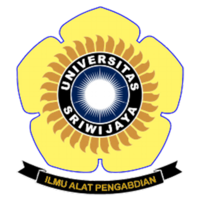Teknik Budidaya Petani Tanaman Karet (Hevea brasiliensis) terhadap Hama dan Penyakit di Kecamatan Tanjung Batu, Kabupaten Ogan Ilir
Abstract
Arsi A, SHK Suparman , Hamidson H, Gunawan B, Pujiastuti Y, Pratama R, Mauluddin M. 2022. Rubber plant (Hevea brasiliensis) cultivation techniques against pests and diseases in Tanjung Batu District, Ogan Ilir Regency. In: Herlinda S et al. (Eds.), Prosiding Seminar Nasional Lahan Suboptimal ke-10 Tahun 2022, Palembang 27 Oktober 2022. pp. 898-909. Palembang: Penerbit & Percetakan Universitas Sriwijaya (UNSRI).
Rubber plant (Hevea brasiliensis) is a plantation crop with high economic value and one of the important agricultural commodities in the international environment and also in Indonesia. Geographical compatibility conditions and soil types that support the growth of rubber plants (Hevea brasiliensis), make farmers in Tanjung Batu District use their land to cultivate rubber plants. Plant-disturbing organisms (OPT) are one of the obstacles encountered in rubber cultivation activities which interfere with growth and affect the yield of rubber latex production. The use of pesticides is mostly done by farmers who think they can get fast and practical results. The purpose of this study aims to evaluate farmers in rubber cultivation techniques against pests and diseases in Tanjung Batu District. This research was conducted from May to July 2022. The method used to observe rubber plants was using a simple purposive sampling method. The results of research on rubber farmers have different planting methods. The observed rubber farmers have the status of profit-sharing land. To increase rubber resistance to pests and diseases, fertilization and sanitation are carried out. Pests and diseases found on farmer's land, namely, leaf fall disease and termite pests.
Keywords
Full Text:
PDFArticle Metrics
Abstract view : 796 timesPDF - 2773 times
Refbacks
- There are currently no refbacks.

